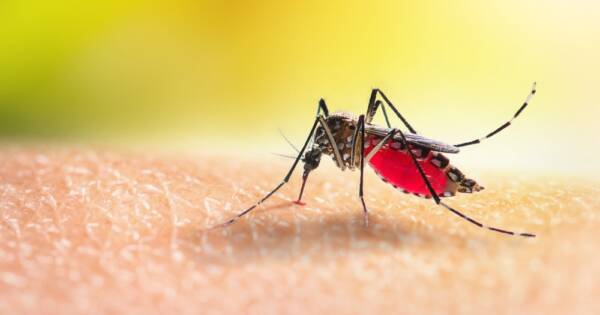Cryotherapy, a treatment that involves briefly exposing the body to extremely cold temperatures, has gained significant popularity in recent years among athletes, wellness enthusiasts, and individuals seeking pain relief. Quick, cold exposure is believed to help reduce inflammation, improve circulation, boost mood, and accelerate muscle recovery. If you’re curious about how cryotherapy works and the range of potential benefits it offers, you’re certainly not alone in exploring this innovative therapy.
What Is Cryotherapy?
Cryotherapy involves the use of freezing or near-freezing temperatures to treat various health conditions. The most common form is whole-body cryotherapy, where you stand in a cryo chamber for two to four minutes while extremely cold air, typically between -180°F to -240°F, surrounds your body. There’s also localized cryotherapy, which targets specific areas, such as the knees, shoulders, or back.
During whole-body cryotherapy, you’ll wear minimal clothing, like shorts and a sports bra or underwear, along with protective gloves, socks, and slippers to shield your extremities from frostbite. The session is brief but intense, as the cold temperature triggers a physiological response that can have several potential health benefits. Cryotherapy centers often have certified technicians who guide you through the process, ensuring safety and comfort.
Potential Health Benefits of Cryotherapy
Cryotherapy is known for its potential to relieve various health issues and promote overall well-being. Here are some of the key benefits:
- Reduces inflammation: The cold exposure helps reduce inflammation by constricting blood vessels and decreasing blood flow to targeted areas. This can be particularly helpful for athletes or individuals with chronic pain conditions like arthritis.
- Eases muscle soreness and speeds up recovery: Many athletes use cryotherapy to alleviate muscle soreness and accelerate recovery after intense workouts. The extreme cold can numb pain, decrease swelling, and promote faster healing.
- Boosts mood and energy: Cryotherapy can stimulate the release of endorphins and adrenaline, which can enhance mood, increase energy levels, and reduce symptoms of anxiety and depression.
- Enhances skin health: Some people use cryotherapy to improve skin appearance, as it may help reduce inflammation, tighten pores, and boost collagen production, leading to healthier-looking skin.
- Supports weight loss: While cryotherapy alone won’t cause significant weight loss, it can support a weight loss plan by temporarily boosting metabolism. The cold exposure forces the body to work harder to maintain its core temperature, burning extra calories in the process.
While these benefits are promising, it’s important to note that cryotherapy is still being researched, and its long-term effects are not fully understood. It’s always best to consult with a healthcare professional before starting cryotherapy, especially if you have any underlying health conditions.
What to Expect During a Cryotherapy Session
If you’re new to cryotherapy, knowing what to expect can help ease any anxiety. When you arrive at the cryotherapy center, you’ll change into the appropriate clothing and receive protective gear for your hands, feet, ears, and nose. The technician will then guide you into the cryo chamber.
Once inside, the chamber fills with a dry, extremely cold mist. You’ll experience an intense chill, but the session lasts only two to four minutes, making it manageable for most people. The technician will monitor you throughout the session to ensure your safety and comfort.
After the session, you might feel an immediate sense of euphoria and energy due to the release of endorphins. Your skin will be slightly red from the cold, similar to how it looks after being outside on a chilly day, but this typically subsides quickly. Many people report feeling more relaxed and experiencing less pain in the hours following their cryotherapy session.
Tips for First-Time Users
If you’re trying cryotherapy for the first time, here are some tips to make the experience as smooth and enjoyable as possible:
- Start slow: If you’re sensitive to cold, opt for localized cryotherapy first to get used to the sensation before trying a full-body session.
- Wear dry clothing: Make sure your clothing and skin are completely dry before entering the cryo chamber. Moisture can increase the risk of frostbite.
- Listen to your body: While the technician will be there to monitor you, it’s important to pay attention to how your body feels. If the cold becomes unbearable or you feel dizzy, signal the technician to stop the session.
- Stay hydrated: Drink plenty of water before and after your cryotherapy session. Staying hydrated helps your body recover and flush out toxins.
- Consult your doctor: If you have underlying health conditions, such as heart problems or poor circulation, consult with your healthcare provider before undergoing cryotherapy.
Is Cryotherapy Right for You?
Cryotherapy offers a unique and potentially beneficial experience for those seeking to reduce inflammation, relieve pain, or boost overall well-being. Understanding the process and knowing what to expect can help you decide if it’s right for you.
With the potential benefits for muscle recovery, mood enhancement, and skin health, cryotherapy is a treatment worth exploring. Always start slowly, listen to your body, and consult with a healthcare professional to ensure a safe and positive experience.




